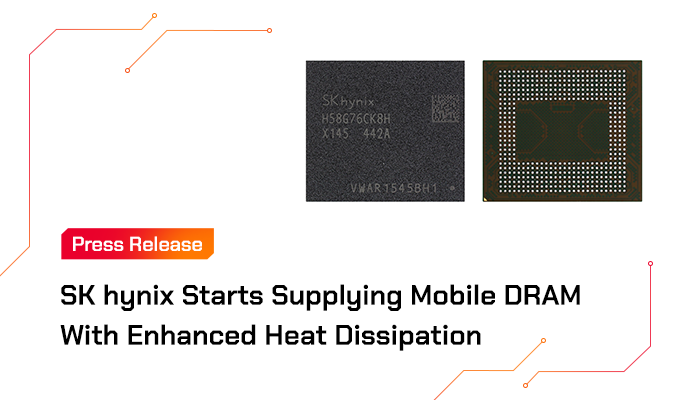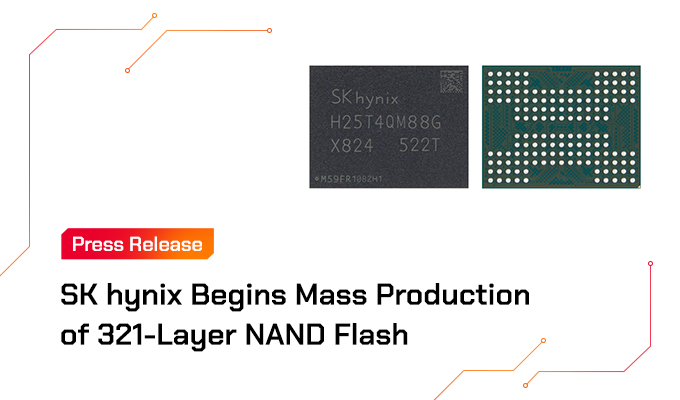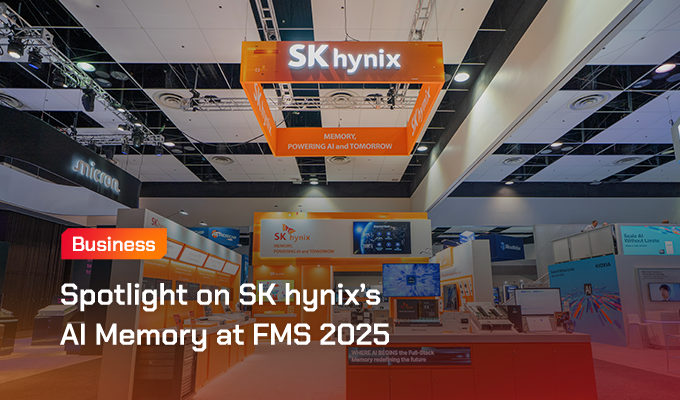When the earliest semiconductor devices emerged in the 19th century, a revolution was set in motion that would reshape the technological landscape. One scientific breakthrough after another, these milestones mark the dawn of an era in which innovation and progress became the new normal. Ultimately, these discoveries changed the way people live, work, and connect. In this Semiconductor 101 episode, the milestones and key turning points of the semiconductor industry, and SK hynix, will be examined to better understand how semiconductor technology reached today’s unprecedented levels.
![]()
When was the first semiconductor made?
As shown in the first episode, the development of semiconductor technology throughout history cannot be attributed to one person or a single moment. Instead, a long and intertwined web of pioneers and innovators contributed to the field’s evolution.
Starting with the first documented observation of a semiconductor effect by English scientist Michael Faraday in 1833, progress in the semiconductor world began to gather pace with several key discoveries. In 1874, German physicist Karl Ferdinand Braun invented what is widely considered to be the first-ever semiconductor diode1. The mid-20th century then witnessed a number of key inventions including the transistor2 in 1947, the integrated circuit3 in 1958, and the MOSFET4, in 1960.
![]()
The origins of semiconductor memory can be traced back to the 1960s
A number of these innovative technologies would go on to be applied in the memory field, leading to the first semiconductor memory products. Developed by engineers at major semiconductor companies, some of these early semiconductor memory solutions include: DRAM5, SRAM6, and NAND flash.
DRAM
In 1966, IBM’s Robert Heath Dennard invented DRAM, a system that would hold one bit in a single transistor. The technology was put into popular use in 1970 when Intel developed a 1-kilobit DRAM chip using a three-transistor cell design. Called the 1103, the first-ever commercial DRAM replaced magnetic core memories as the new standard technology for computer memory.
SRAM
Robert Norman patented a semiconductor SRAM design at Fairchild Semiconductor in 1963 to create a faster and more reliable form of memory capable of enhancing computing performance. Two years later, IBM commercialized the first SRAM chip for use in its computer. Unlike DRAM, SRAM can retain data without the need for constant refreshing. This capability, coupled with its high speed and reliability, ensured that SRAM became an essential component in modern computing.
NAND Flash
As the most widely-used flash memory today, NAND flash has numerous applications including smartphones, solid-state drives (SSDs), and data centers. This electronic, non-volatile computer memory storage that can be erased and reprogrammed was first unveiled by Fujio Masuoka of Toshiba Memory Corporation (now known as KIOXIA) in 1987. The company would go on to commercialize the world’s first NAND flash memory product in 1991.
When did semiconductor memory become important for our daily lives?
Semiconductor memory has progressed and grown in importance in line with the rapid explosion of data and technological advancements. By tracing the history of technological progress over the last century, it is clear to see the key role that semiconductor memory plays in these technologies and daily life.
![]()
Demand for semiconductor memory has grown rapidly as data generation has increased over the years
Age of Giant Computers: Before 1980s
Although unimaginable today, the first line of computers such as the ENIAC7 was so large that they would take up a whole room. These massive devices were almost exclusively used by businesses and governments for bulk data processing and complex calculations. In terms of data storage, there was a landmark change in the 1970s when semiconductor memory replaced magnetic-based memory to become the dominant storage technology.
Emergence of PCs: 1980s–2000s
Many people’s memories of their first family computer will be of a bulky, gray PC sitting atop an office desk. While they are primitive by modern standards, these early popularized PCs of the 1980s brought computing—and data—into homes across the world for the first time. One of the most prevalent PCs of this era was Commodore 64 (C64), which came with 64 kilobytes (KB) of RAM8 when it was released in 1982.
Smartphones & Cloud Computing: 2000s to Present
Although it was not the first smartphone, the original iPhone kicked off the smartphone boom upon its release in 2007. Able to take photos, send emails, access the internet, and more, smartphones generate huge amounts of data which is stored in semiconductor memory. As the pace of data generation continues to quicken, demand is also growing for cloud storage which relies on server DRAM, NAND flash, and SSDs.
The AI Era & Beyond
As AI continues to permeate more aspects of daily life, semiconductor memory is driving the technology’s development. High-performance memory such as SK hynix’s HBM9 is optimized for AI applications as it can handle and access vast amounts of data. As the pace of data usage continues to accelerate over the course of the AI era and beyond, semiconductor memory will only play a bigger role in AI and other advanced technologies.
When did SK hynix start manufacturing semiconductors?
Founded as Hyundai Electronics in 1983, SK hynix has been a hub of innovation in the semiconductor industry over the course of its 40-plus-year history. In 1984, SK hynix’s pilot production of South Korea’s first-ever 16 kilobit (Kb) SRAM kickstarted the company’s journey as a semiconductor manufacturer. Just a year later, the company mass-produced its first DRAM product—a 64 Kb DRAM. SK hynix then completed construction of a semiconductor assembly plant two months later, enabling it to ramp up production.
As the years ticked by, the company enhanced its product lineup and fully established itself as a leader in the semiconductor sector. Some of its key milestones included mass-producing the 256 Mb SDRAM for mobile phones in 2003, developing the 512 Mb NAND flash in 2004, and the world’s first TSV10-based HBM in 2013.
Fast-forward to today, SK hynix has a broad portfolio of ultra-high-performance solutions including DRAM, NAND flash, SSDs, and CMOS image sensors (CIS)11. The company is continually pushing technological limits to develop groundbreaking products such as the world’s first 321-layer NAND flash and industry-leading HBM3E. Taking the latest 12-layer, 36 GB HBM3E as an example, this groundbreaking DRAM for AI systems boasts around 4.5 million times12 more data storage than the 64 Kb DRAM of 1985. Having come so far over the years, the company is set to continue to set new standards in the semiconductor sector with its next-generation products.
![]()
SK hynix’s semiconductor memory products have evolved immensely since the company’s early days
When did SK hynix expand into the global market?
SK hynix has constantly advanced its product lineup, formed strategic global partnerships, and innovated across its operations to become a leading light in the semiconductor memory industry. Looking at the company’s flagship products, SK hynix held a 31.8% share of the DRAM market and a 21.6% share of the NAND flash market in the fourth quarter of 2023. The company is also the HBM market leader, dominating the sector with its industry-leading products.
![]()
SK hynix commands significant shares of the global DRAM and NAND flash markets
While there wasn’t a single moment when SK hynix expanded in the global market, there are several instances over the years where the company has made its mark worldwide:
1983 – Began overseas expansion with establishment of Hyundai Electronics America—later becoming SK hynix America
1989 – Ranked 20th in the global semiconductor industry
1995 – Established a non-memory U.S. corporation called SYMBIOS and constructed a semiconductor plant in the U.S. state of Oregon
1996 – Began its initial public offering (IPO) process
2004 – Sold non-memory business to shift focus to semiconductor memory
2006 – Completed construction of DRAM chip plant in Wuxi, China
2010 – Named to Dow Jones’ Sustainability World Index, started joint development with Hewlett-Packard for next-generation memory product, and completed second memory chip plant in China capable of 100 million units of 1 GB DRAM chips per month
2012 – Joined SK Group and officially rebranded as SK hynix
2018 – Posted record operating profits
2020 – Invested in AI company Gauss Labs located in Silicon Valley
2021 – Completed first phase of acquiring Intel’s NAND business to enhance AI memory capabilities
2023 – Developed and mass-produced HBM3E with the world’s best specifications for AI systems and applications
2024 – Announced plan to build advanced chip packaging plant and R&D facility in Indiana, U.S.
1Semiconductor diode: A simple electronic component that conducts electricity in one direction.
2Transistor: A semiconductor device that regulates current or voltage flow and acts as a switch or gate for electronic signals.
3Integrated circuit (IC): A small electronic device comprising of components such as transistors, resistors, and capacitors on semiconductor material.
4Metal-oxide-semiconductor field-effect transistor (MOSFET): An active semiconductor device in which a conducting channel is induced in the region between two electrodes by a voltage applied to an insulated electrode on the surface of the region.
5Dynamic random-access memory (DRAM): Volatile memory that needs to be refreshed periodically to maintain stored data. Like SRAM, it loses stored data when the power supply is removed.
6Static random-access memory (SRAM): Volatile memory that holds memory permanently as long as power is supplied. Unlike DRAM, it does not have to be refreshed periodically to keep storing data.
7Electronic Numerical Integrator and Computer (ENIAC): Built in 1946, the ENIAC was the world’s first general purpose electronic computer.
8Random access memory (RAM): A computer’s main memory in which data can be rapidly accessed directly by the central processing unit regardless of the sequence it was recorded.
9High Bandwidth Memory (HBM): A high-value, high-performance product that possesses much higher data processing speeds compared to existing DRAMs by vertically connecting multiple DRAMs with through-silicon via (TSV).
10Through-silicon via (TSV): A type of vertical interconnect access (via) that completely passes through a silicon die or wafer to enable the stacking of silicon dice.
11CMOS image sensor (CIS): Acting as the “eyes” of electronic devices, a CIS converts light into electrical energy to create images.
12Calculation based on the decimal standard.
Having looked at when semiconductor technology and SK hynix began to make their mark on the world, the next episode will cover where semiconductors are developed and more.
Read more articles from the Semiconductor 101 series








